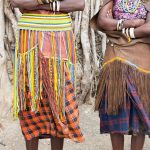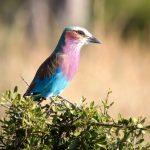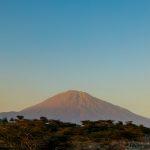Tanzania Wildlife: A Look at Endemic Species Found in Tanzania
Tanzania has a plethora of native species found exclusively within its borders. Ask your safari guide about endemic mammals, birds, and fish, to get the most out of your gamedrives. Take a picture, savour the moment, and tick off a once-in-a-lifetime sight one animal at a time. After all, you won’t be able to find them anywhere else in the world. Here are a few species to look out for:
Zanzibar Red Colobus is a species of monkey endemic to Unguja, the main island in the Zanzibar Archipelago, just off the coast of Tanzania. It is an endangered species, and numbers are still dwindling due to habitat loss on the island, but conservationists are trying to work with governments to reverse this trend. These monkeys are identifiable by their dark red to black fur, pale underside, and they have en electrocuted, frazzled look with tufts of white, wispy hair sticking out of their face from all angles.

© White Sand Zanzibar
Abbott’s duiker is a forest-dwelling solitary antelope which can only be found in the higher altitude regions of Tanzania, such as Mount Kilimanjaro, the Usambara mountains in the west, the Udzungwa mountain range, and the southern highlands. It isn’t an easy animal to spot though, so it’s not worth revolving your whole trip around seeing one in case you leave disappointed. Its shy nature, nocturnal habits and endangered status make Tanzania’s Abbot’s duiker secretive, and little is known about this elusive antelope. But if you did happen upon one, be prepared for a very excitable guide.
The Fischer’s Lovebird is the most gloriously colourful small parrot, and can be found in northern and central Tanzania. Perhaps due to its beauty, this bird was one of the most traded in the world in the 80s. Thankfully, trapping for captivity is now illegal. But farmers consider these small flashes of colour – which flock in their hundreds – to be a past, as they feed on crops. These birds are named for their strong bond between pairs, as Lovebirds mate for life. If they are separated the health of each bird will suffer. They are often seen pecking each other’s beaks affectionately, mirroring kissing.
The Pemba scops owl is endemic to Pemba Island in the Zanzibar Archipelago. Its status is vulnerable, and its numbers are continuing to decline due to agricultural changes on the remote island. These light brown owls have intense yellow eyes with a pink rim and are only 15cm tall with a 45cm wing span. Get into birding, and your whole safari experience will elevate to new heights. Spotting a rare passing bird – especially when it comes to owls – is a joy.

Fundu Lagoon on Pemba
© Fundu Lagoon
You may recognise the red-billed hornbill as being Zazu in The Lion King. Well, Tanzania has its very own endemic species of Zazu in the – you guessed it – Tanzanian red-billed hornbill. It’s fairly similar to the Northern red-billed hornbill but can be separated by its black rim around the eye, rather than pale skin. It’s found in open, woodland savannah,
Fear not, the Pemba flying fox isn’t actually a flying fox – but a fruit bat. Saying that though, these bats – endemic to Pemba Island – are one of the world’s largest fruit bats, with a wingspan of up to 5ft 3 inches. As per their size, Pemba flying foxes are part of the mega-bat genus. Their name comes from their fox-like red face, and tawny fur. Enjoy a sundowner tipple and watch these incredible animals emerge to forage for fruit. Once vulnerable, as they were seen as a delicacy for humans to eat, their numbers are now – excuse the pun – flying, with 22,000 recorded in recent decades.






